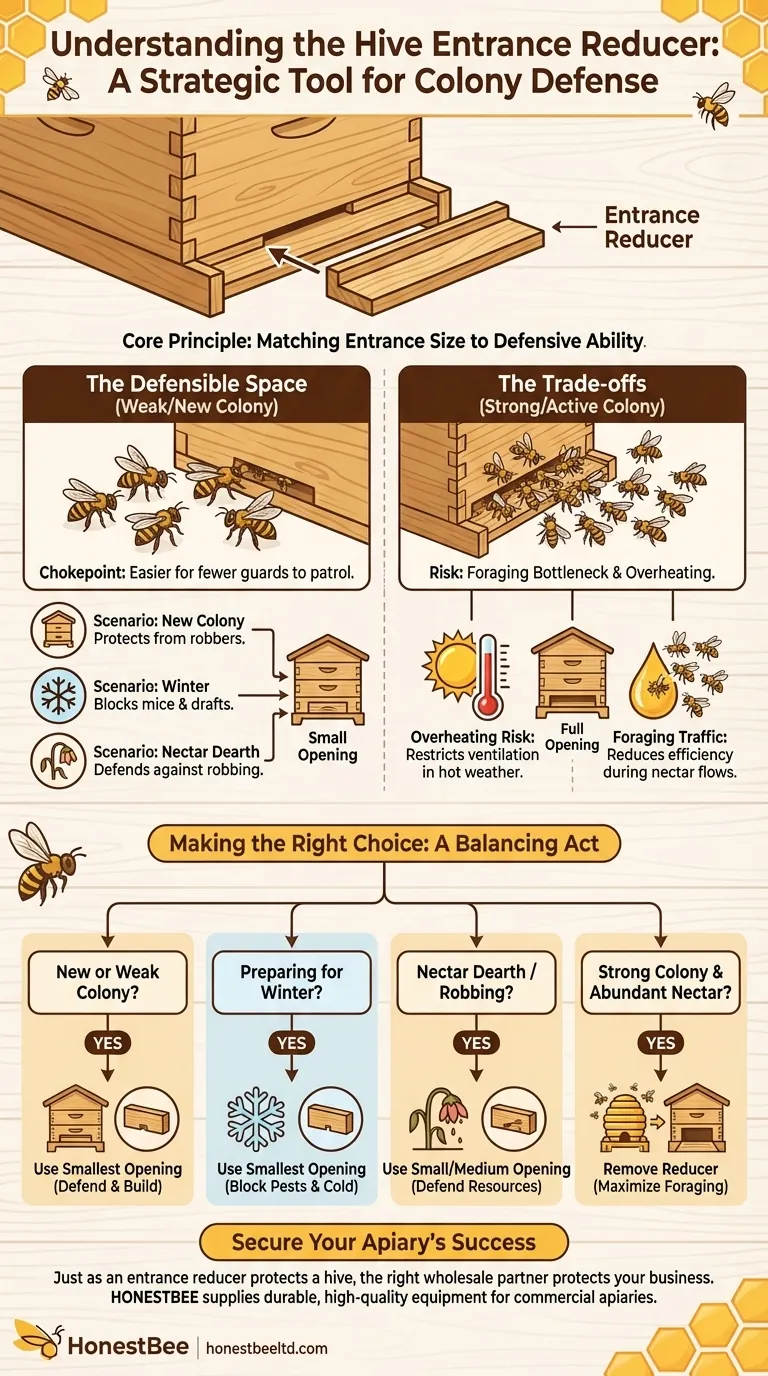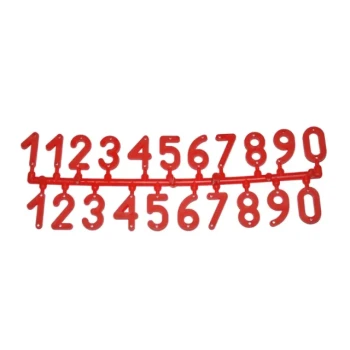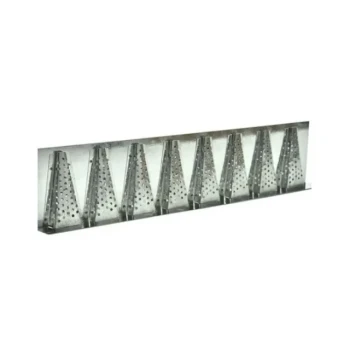In essence, an entrance reducer is a simple wooden cleat used to shrink the main opening of a beehive. Its primary purpose is to create a smaller, more defensible entryway for the colony. This is especially critical for new, weak, or overwintering hives that lack the population to guard a full-sized entrance against threats.
The core principle behind an entrance reducer isn't just about blocking pests; it's about strategically matching the size of the hive's "front door" to the colony's current ability to defend it, ensuring its security during vulnerable periods.

The Core Principle: A Defensible Space
A beehive entrance is a point of vulnerability. Managing its size is a fundamental aspect of beekeeping that directly impacts colony health and survival.
The Role of Guard Bees
Every colony assigns a portion of its workforce as guard bees. These bees patrol the entrance, inspecting incoming bees for the correct hive scent and fending off intruders like wasps, hornets, and bees from other colonies.
Matching Entrance to Colony Strength
A large, open entrance is difficult for a small population of guard bees to patrol effectively. By reducing the entrance, you create a chokepoint that a few guards can successfully defend, much like a narrow doorway is easier to guard than a wide-open gate.
Key Scenarios for Using an Entrance Reducer
While it's a simple tool, its application is situational. A reducer is not meant to be used year-round in most climates.
Establishing a New Colony
When you install a new package of bees or a small nucleus hive ("nuc"), the colony is weak. It has a small population and limited resources, making it a prime target for robbing by stronger, nearby hives seeking to steal its honey. A small entrance is their best defense.
Winterizing the Hive
During winter, the bee population naturally declines, and the colony clusters for warmth. A reducer serves two functions here. It helps keep cold drafts out, but more importantly, it prevents mice and other vermin from entering the hive to seek a warm nesting spot, which would be disastrous for the dormant colony.
During a Nectar Dearth
A nectar dearth is a period when few flowers are blooming, and outside food sources are scarce. This can happen even in mid-summer. During these times, robbing behavior intensifies across all hives. Using a reducer protects your colony from these desperate raids.
Understanding the Trade-offs
Using an entrance reducer is a balancing act, and leaving it in place at the wrong time can cause significant problems.
Risk of Overheating
The entrance is also the hive's primary means of ventilation. Restricting it during hot, humid weather can lead to overheating, which stresses the colony and can even melt beeswax combs.
Creating a Foraging Bottleneck
During a strong nectar flow, a healthy hive is extremely busy, with thousands of forager bees flying in and out. A small entrance creates a traffic jam, reducing the efficiency of the entire foraging operation and potentially limiting the amount of honey the colony can produce. This traffic jam is often seen as "bearding," where bees cluster on the outside of the hive.
Making the Right Choice for Your Goal
Always assess your colony's strength and the current environmental conditions before deciding on the entrance size.
- If you are installing a new or weak colony: Use the smallest reducer opening to give the bees a fighting chance against robbers.
- If you are preparing for winter: Use the smallest opening to block mice and reduce drafts.
- If your colony is strong and nectar is abundant: Remove the reducer completely to maximize foraging traffic and ventilation.
- If you notice robbing behavior or are in a nectar dearth: Re-install the reducer to a medium or small opening to help the colony defend itself.
Ultimately, the entrance reducer is a critical tool that allows you to help your bees manage their own security and efficiency.
Summary Table:
| Scenario | Benefit of Entrance Reducer | Recommended Opening |
|---|---|---|
| New/Weak Colony | Protects against robbing while colony strength builds. | Smallest Opening |
| Winter Preparation | Blocks mice and reduces cold drafts. | Smallest Opening |
| Nectar Dearth | Helps defend against desperate robbing from other hives. | Small or Medium Opening |
| Strong Colony / Abundant Nectar | (Reducer Removed) Maximizes foraging efficiency and ventilation. | Full Opening |
Secure Your Apiary's Success with HONESTBEE
Just as an entrance reducer is essential for protecting a single hive, having the right wholesale partner is critical for the health and profitability of your entire operation. At HONESTBEE, we supply commercial apiaries and beekeeping equipment distributors with the durable, high-quality supplies they need to thrive.
Let us help you build a stronger, more secure business.
Contact HONESTBEE today for wholesale pricing and expert support.
Visual Guide

Related Products
- Beehive Entrance Reducer Guardian Metal Hive Entrance for Bees
- Multi-Functional Sliding Hive Entrance for Beekeeping
- Steel Round Disc Entrance Reducer for Flexzion Bee Hive Nuc Box Gate
- Professional Reversible Beehive Hive Entrance
- High Security Emlock Strap System
People Also Ask
- What are the different types of entrance reducers available? A Guide to Protecting Your Hive
- What should be done after transferring frames to the new hive? Essential Steps for a Secure Colony
- What happens if you seal an entrance to a bee hive? Avoid a Costly Structural Disaster
- What are the features of the side with oblong holes in the entrance reducer? A Guide to Hive Defense & Health
- What are the two functions of the Entrance Reducer? Master Hive Defense and Safe Transport



















